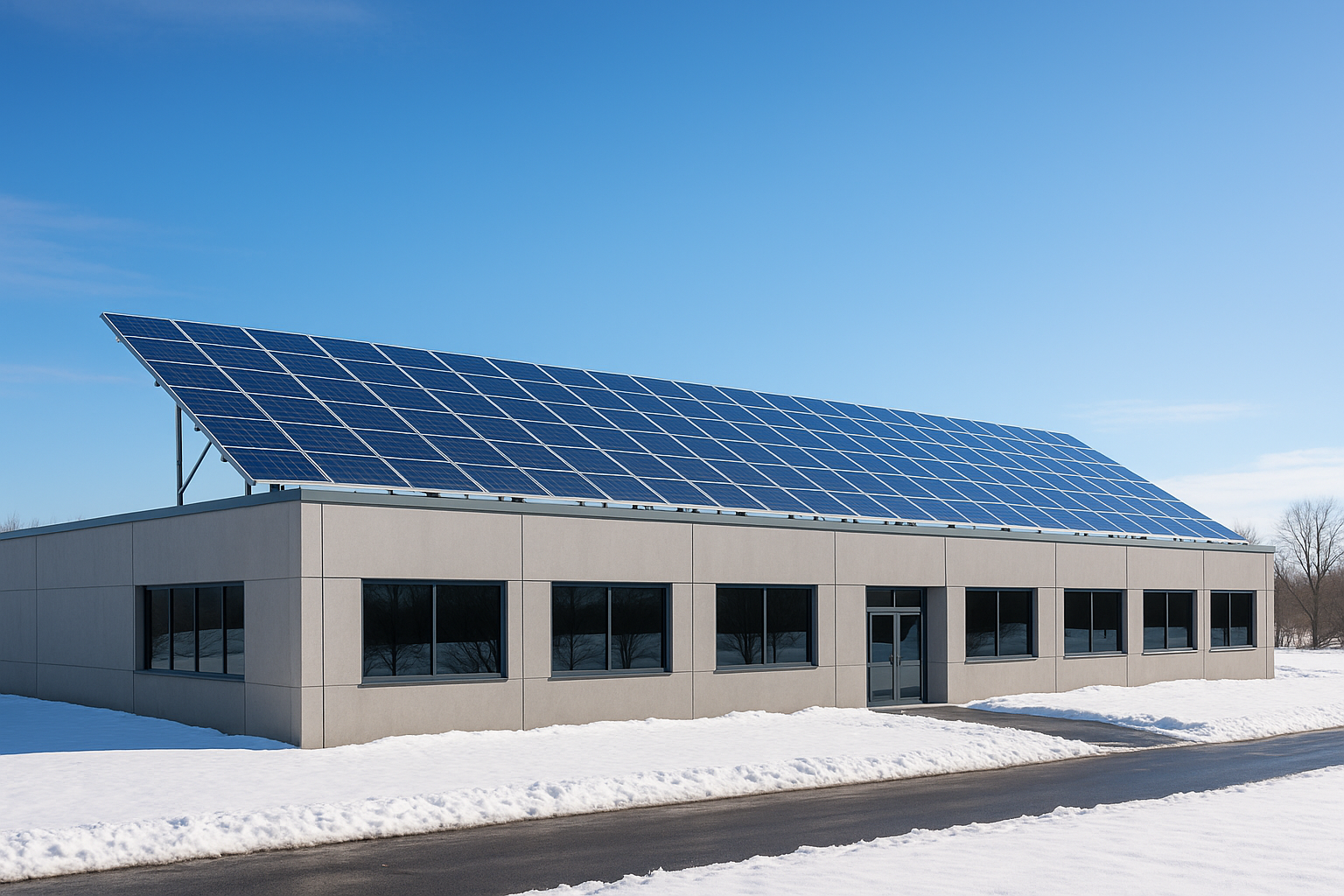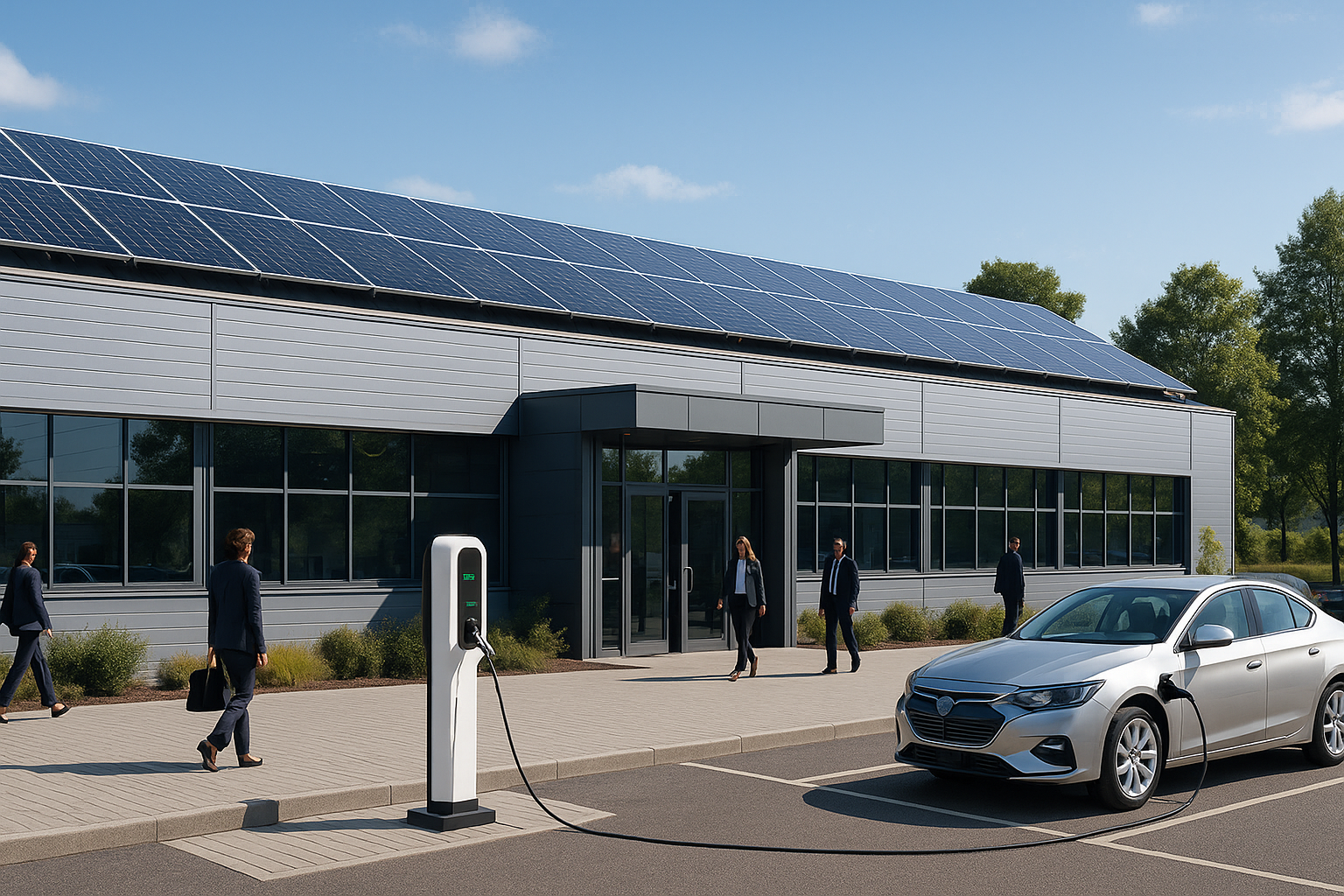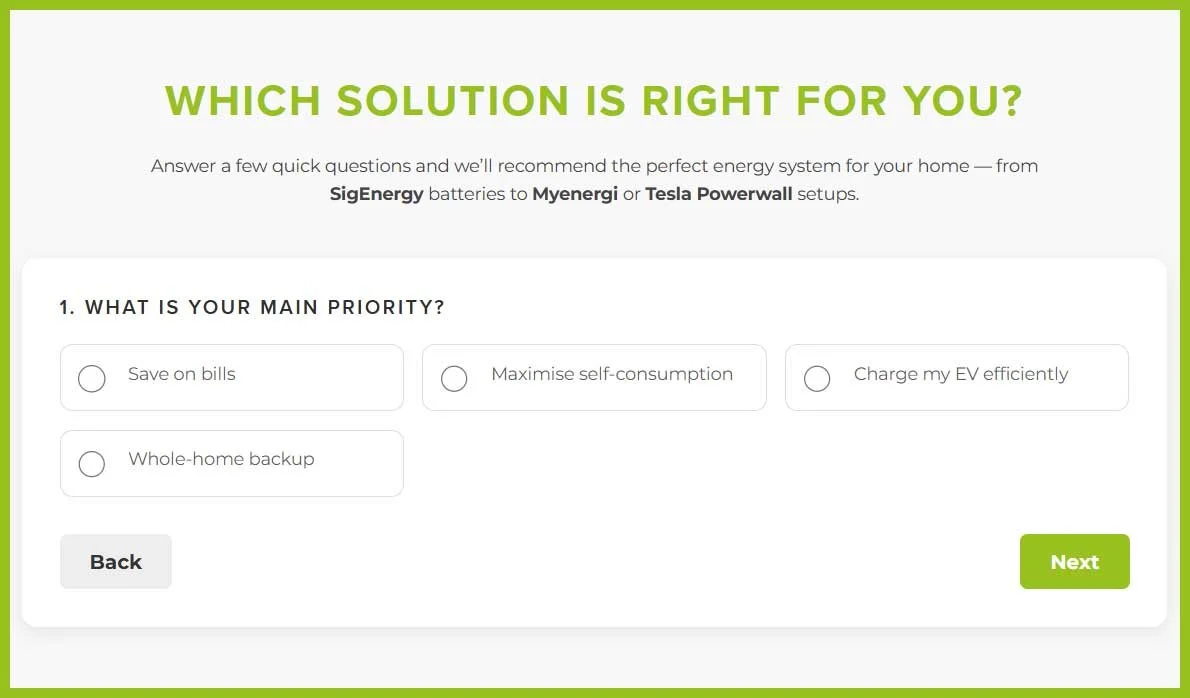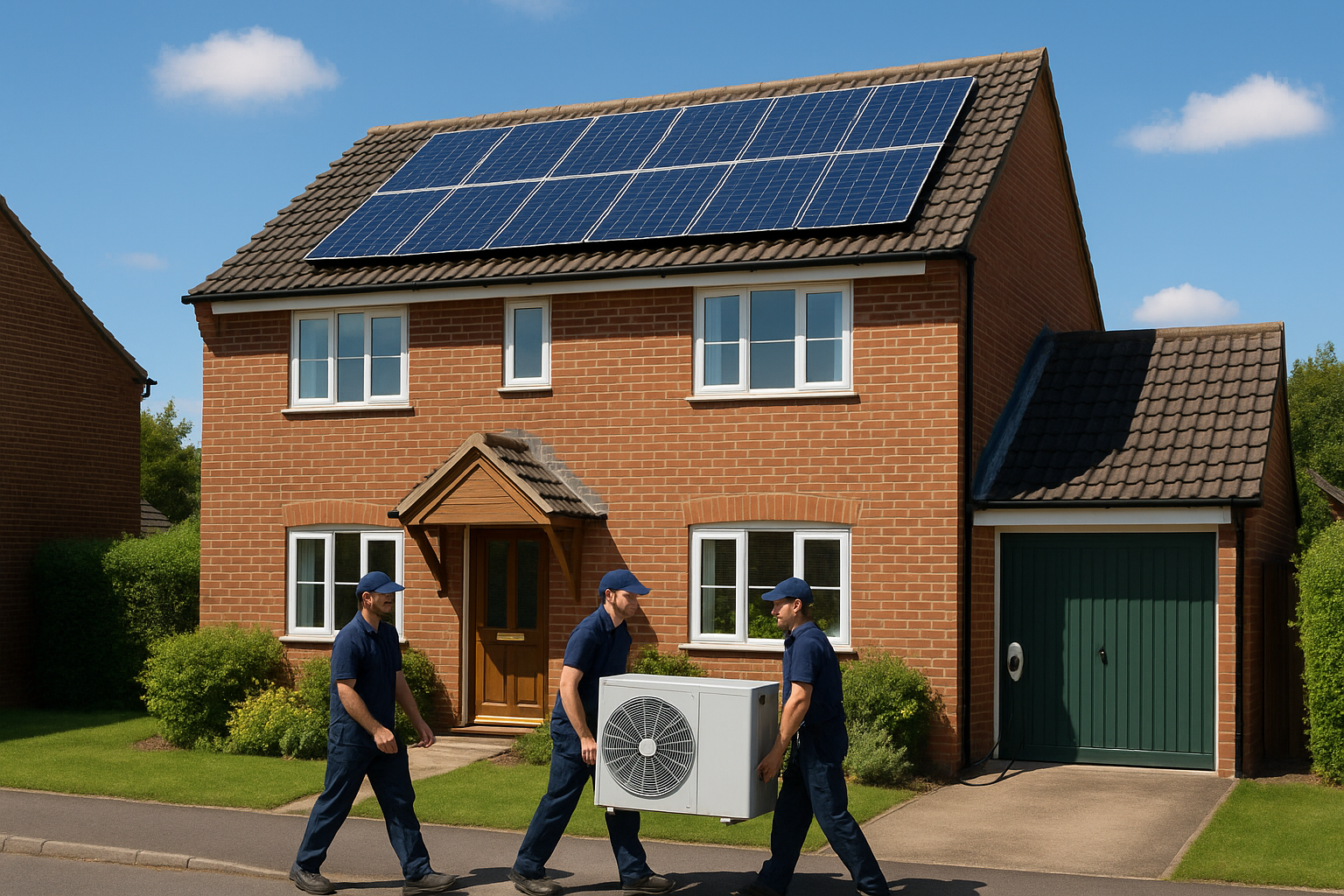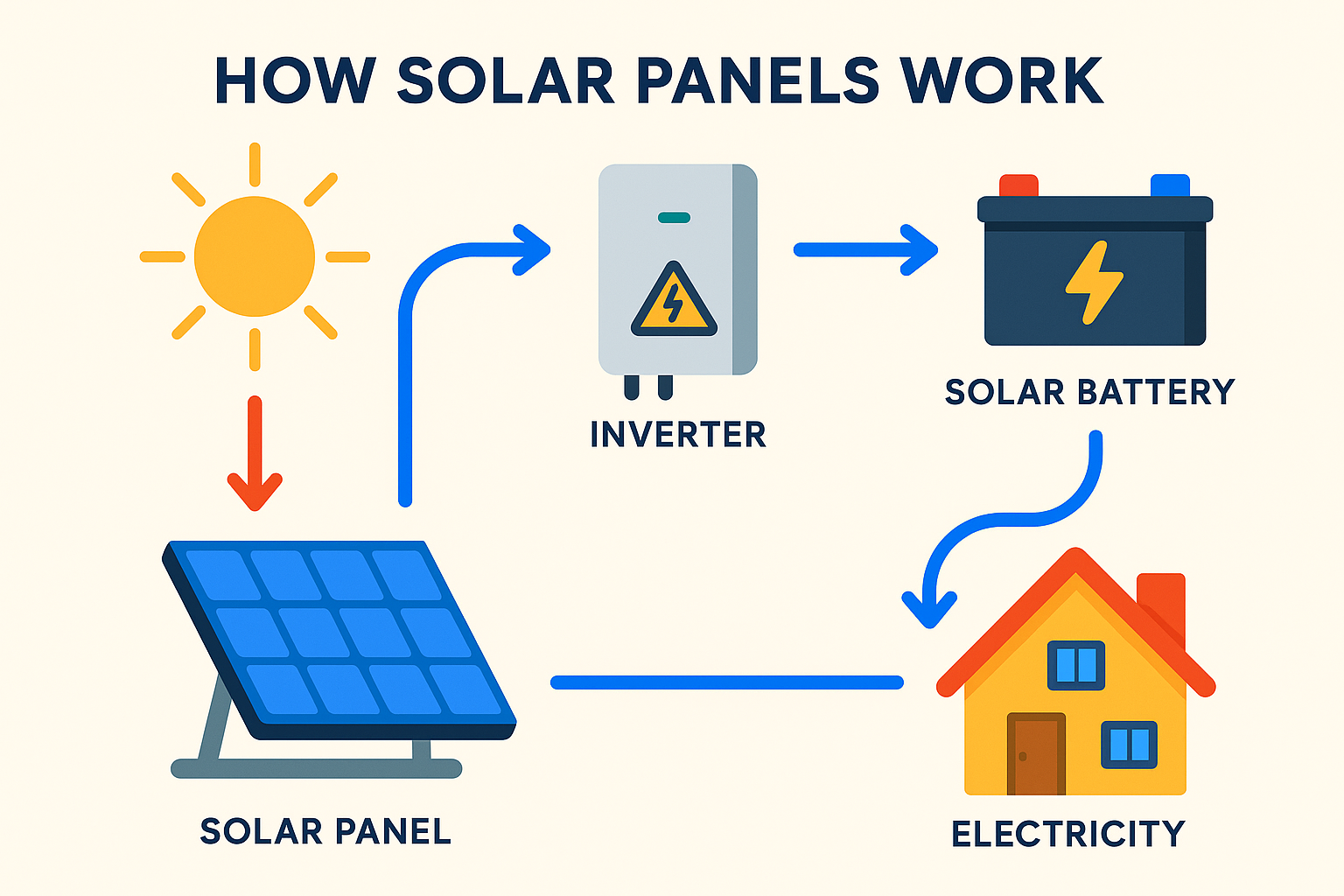How the Tool Works
Step 1: Choose Your Main Priority
Start by identifying your goal — whether that’s saving on energy bills, maximising self-consumption, charging an electric vehicle efficiently, or achieving whole-home backup power.
Step 2: Describe Your Roof and Property
Next, you’ll specify your property type: pitched roof, flat roof, mixed/asymmetric roof, or one with partial shading. This helps the system understand your energy potential and design constraints.
Step 3: Share Your Current Setup
Do you already have solar panels or an EV charger installed? The tool factors in your existing setup so that recommendations complement, not duplicate, your equipment.
Step 4: Receive a Personalised Recommendation
Based on your responses, the tool provides a tailored system suggestion — highlighting compatible brands, technologies, and configuration options. You can then request a quote or book a consultation with the UKGEI team.
Why It Matters
Tailored to Your Needs
The solution finder delivers results based on your property and energy priorities — removing guesswork and avoiding unsuitable recommendations.
Simplifies Complex Choices
From panel wattage to inverter types, renewable systems can be technical. This tool breaks it down into an easy, guided journey.
Saves Time and Increases Confidence
By narrowing down the right options early, you can move forward confidently without endless research.
Avoids Costly Mismatches
By assessing roof orientation, shading and your current setup, the tool helps prevent choosing incompatible or inefficient products.
Benefits for Homeowners and Businesses
Commercial clients: Explore scalable solar and storage solutions that lower operational costs and meet sustainability goals.
Installers and property managers: Save time on pre-qualification by using the tool for early-stage assessments.
Why Choose UKGEI
UKGEI is a trusted renewable energy specialist working across Surrey, Hampshire and Berkshire, with extensive experience in:
The Interactive Brand & Solution Finder reflects UKGEI’s commitment to innovation and customer service — helping clients find smarter, more sustainable energy solutions quickly and confidently.
Get Started Today
Whether you’re upgrading your current system or exploring renewable energy for the first time, UKGEI’s Interactive Brand & Solution Finder is the perfect starting point.
Answer a few quick questions, get your tailored recommendation, and take the next step toward a greener, more efficient future.


